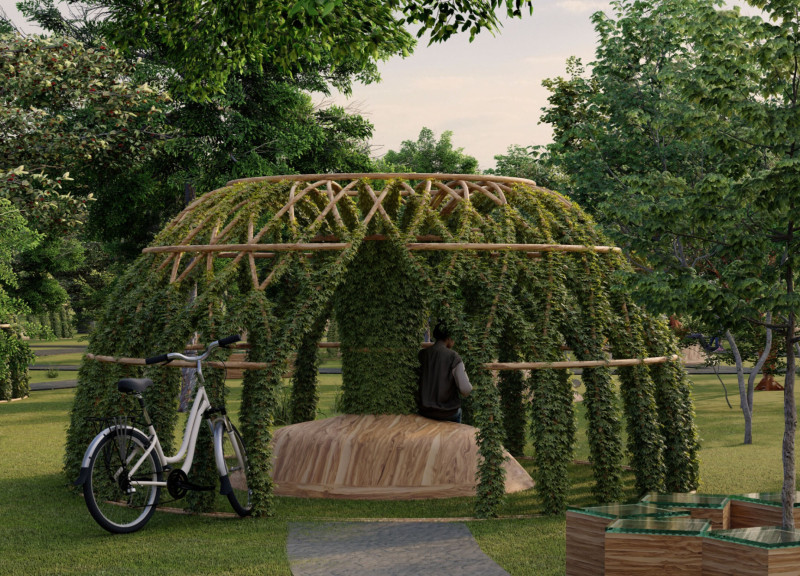5 key facts about this project
The design serves multiple functions, including providing sheltered reading spaces, facilitating social interaction among users, and serving as a community hub for book exchange. The incorporation of natural elements, such as trees and vegetation, creates an environment conducive to relaxation and reflection, positioning the project as both a functional and aesthetic addition to the urban landscape.
Modular Design and Integration with Nature
"Under a Tree" features three distinct modular components. The first module is a dome-like pavilion, offering a private and intimate reading experience. It provides shelter while allowing users to feel enveloped by nature. The design promotes solitude amid the broader environment.
The second module is an open-air pavilion designed for communal use. This space encourages socialization and interaction, allowing users to gather, share ideas, or discuss literature. This aspect distinguishes the project by fostering a sense of community around the shared activity of reading.
The third module consists of multipurpose boxes that facilitate the exchange and storage of books. This encourages community engagement through the sharing of resources, expanding the function of the space beyond mere individual use.
Materiality and Sustainable Practices
The architectural design emphasizes sustainable material choices, primarily utilizing bamboo for structural components. Bamboo is selected for its strength, flexibility, and rapid growth, making it an eco-friendly option that aligns with the project's ethos. The use of wood in the design provides horizontal bracing, further enhancing structural integrity while contributing to the natural aesthetic.
The incorporation of local vine species that grow on the bamboo adds a living element to the design, enhancing its biophilic qualities over time. This focus on eco-sensitive materials and their contextual relevance elevates the architectural response to urban challenges, promoting sustainability in design practices.
The project highlights innovative design approaches by offering a flexible, modular layout. The distinct modules serve multiple functions while maintaining accessibility. The blending of these elements creates a multifunctional space that responds effectively to community needs.
The "Under a Tree" project exemplifies the intersection of architecture and nature, offering a comprehensive design that supports reading culture and community interaction. For further exploration of its architectural plans, sections, and ideas, readers are encouraged to review the detailed project presentation.


























